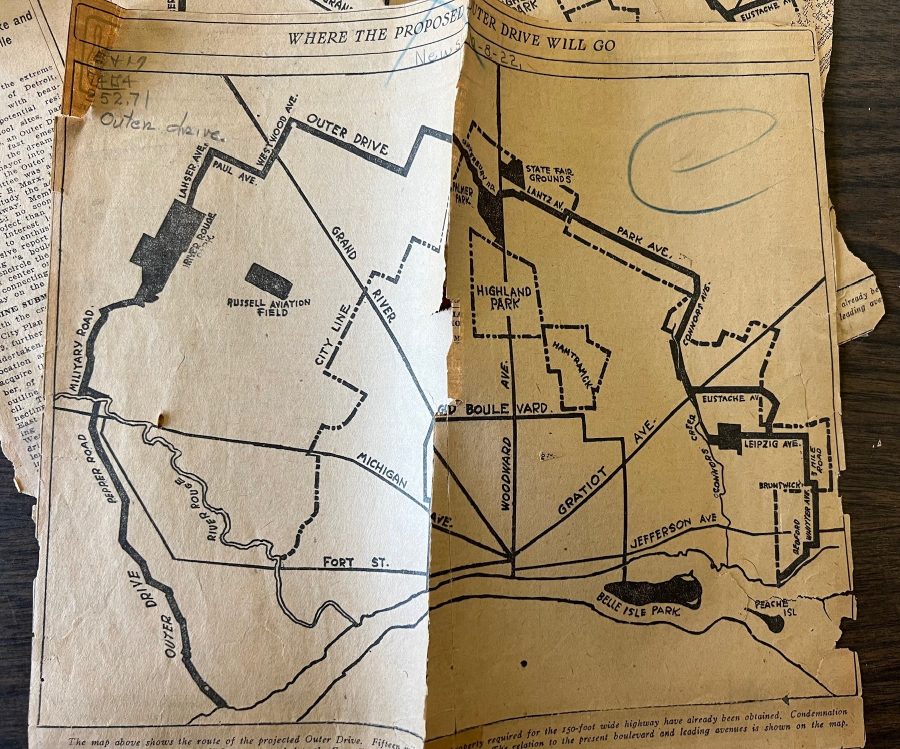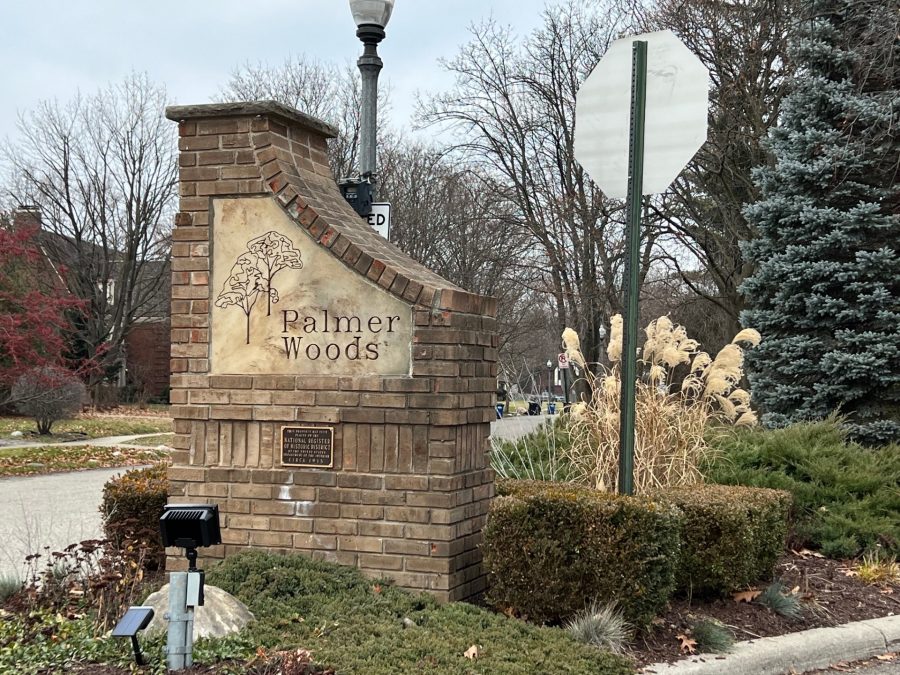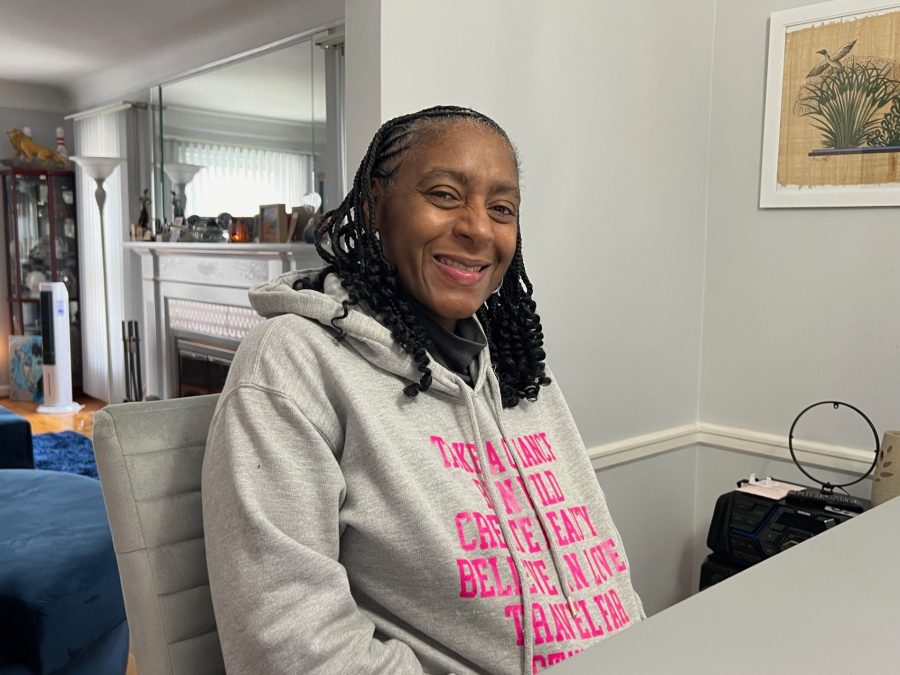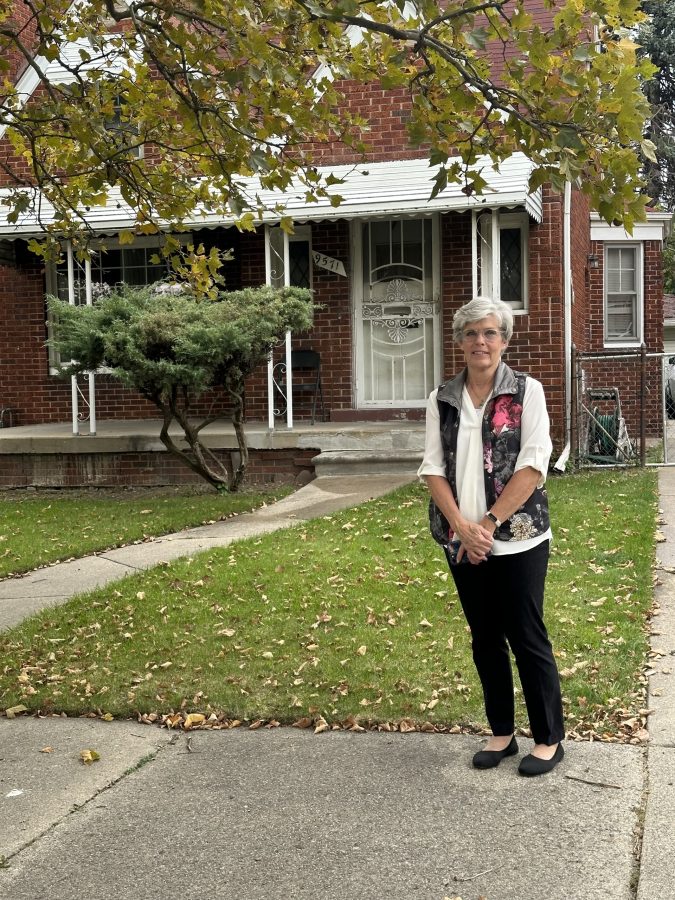CuriosiD: What is the history of Outer Drive?
Pat Batcheller January 11, 2024In this episode, we take a ride on metro Detroit’s “scenic boulevard” to explore the history behind its twists and turns.

Outer Drive stretches more than 40 miles from Mack Avenue on Detroit's east side to West Jefferson Avenue in Ecorse.
WDET’s CuriosiD series answers your questions about everything Detroit. Subscribe to CuriosiD on Apple Podcasts, Spotify, NPR.org or wherever you get your podcasts.
In this episode of CuriosiD, we answer the question:
“What is the history of Outer Drive?”
No matter which way you want to get to downtown Detroit from the suburbs, you’re bound to cross Outer Drive at some point. The boulevard intersects several freeways as it stretches from one side of the city to the other and into the Downriver area. So, what’s the story behind this long and winding road?
WDET listener Gretchen White of Grosse Pointe is curious about that.
“Well, I wondered what the thought was behind Outer Drive,” White said. “It doesn’t seem like it’s ever been completed. And so, I wonder if there is any plan to actually complete Outer Drive or if it will just continue to be a confusing street.”
The short answer
City leaders intended to build a scenic route circling Detroit. They started planning in the early 20th century. Outer Drive stretches from Mack Avenue on the city’s east side and winds through many northern neighborhoods. Wealthy homeowners in Chandler Park and Palmer Park didn’t want it going through their communities and forced builders to detour around them. East Outer Drive has two parts. The first stretches from Mack to Conner, then breaks off at City Airport. It resumes again at Mount Olivet Cemetery and ends at Dequindre. West Outer Drive runs from Livernois through Rouge Park before entering Dearborn Heights. Outer Drive ends at West Jefferson in Ecorse.
A twisted history
Outer Drive takes many twists and turns, going in every direction, and is not contiguous. To find out how it got that way, WDET turned to City of Detroit historian Jamon Jordan to straighten things out.
“The idea comes from a committee created by the Mayor of the City of Detroit in 1918,” Jordan said.
That mayor, Oscar Marx, formed a committee to explore the development of a scenic boulevard in response to the growing number of cars and Detroit’s emerging car culture. Jordan says Outer Drive was supposed to form a ring around the city’s outskirts. It was a relatively new design concept at the time, and other cities were building similar streets. The same idea inspired Chicago’s Lake Shore Drive, which follows the Windy City’s eastern edge along Lake Michigan.

In 1917, work had already started on an outer ring road following the borders of Wayne County — about 120 miles long. Detroit’s Outer Drive ended up being much shorter. It stretches more than 40 miles from Mack Avenue on the east side to West Jefferson Avenue in Ecorse. Gretchen White, who asked the question, joined myself and WDET producer Nia Harris at East Outer Drive and Mack. She agreed to take a ride with us from one end of the boulevard to the other.
A journey of discovery
From Mack Avenue, E. Outer Drive passes through Detroit’s Morningside and East English Village neighborhoods. White remarked on the different styles and sizes of the homes along the way.
“As you drive past these homes, the brick fronts and the doors are just beautiful,” she said.
It doesn’t take long to reach the first bend at the intersection of Chandler Park Drive. I turned left to stay on E. Outer Drive and proceed through Morningside to Alter Road. Here, E. Outer Drive turns again, this time to the right.
Jordan says wealthy homeowners near Chandler Park fought to keep Outer Drive from cutting through their neighborhoods. That forced road crews to use existing streets to connect sections of the boulevard.
“It’s merging with these other streets so that it can be done more quickly. To create all new roads or new streets would have taken much longer,” he said.
From Alter Road, E. Outer Drive winds through more neighborhoods until it comes to Conner Street. We turned right onto Conner, passing the Coleman A. Young Municipal (a.k.a. City) Airport, and kept driving until Conner becomes E. Outer Drive again. The boulevard runs through Mount Olivet Cemetery, crosses E. Seven Mile Road, then bends left, merging with State Fair Drive.
From this point, E. Outer Drive leads west, crossing several major roads before ending at Dequindre Street.
The disconnect
In the 1930s, the Detroit City Council gave Wayne County the right of way to extend Outer Drive from Dequindre to Woodward Avenue. But for some reason, that never happened. Instead, we continued west on State Fair to Woodward.

Again, city leaders had planned to extend Outer Drive past Woodward through Palmer Park. And again, property owners opposed them. Jordan says they feared it would hurt their property values. They fought the city and won.
“The Palmer Woods Association believed that the way to come into Palmer Park was because you’re coming there or because you live there,” Jordan said. “It’s not a place you go through.”
Instead, you have to go around by way of Woodward, Seven Mile Road and Livernois Avenue. A right turn onto Livernois takes you north to West Outer Drive, where you make a left turn.
White quickly noticed how different the neighborhoods on W. Outer Drive are compared to E. Outer Drive.
“The houses look a little more modern,” she said. “I’m seeing more ranches on the street, which I don’t think are as ’40s era.”
An avenue for the Black middle class
One of the first more modern homes we passed was a tan brick ranch that once belonged to Berry Gordy, then later, Marvin Gaye. Jordan said as more people migrated from the south to Detroit, Outer Drive became a destination for the Black middle class.
“For a long time, because of housing discrimination, African Americans could not move to certain neighborhoods in the city of Detroit,” he said. “And then later they couldn’t move outside the city of Detroit, they couldn’t move into the predominantly all-white suburbs that surround the city of Detroit. Many middle- and upper-class African Americans would try to get a house near or on Outer Drive.”

In some cases, Black residents who bought homes on Outer Drive passed them on to their children. In 1985, Angelica Bright’s parents purchased a two-story house on W. Outer Drive near McNichols Road that she now owns. Bright remembers playing in the yard as a teenager and feeling like part of a close-knit community.
“It was like family, like everybody knew your neighbors, like you were at your neighbor’s house, your neighbors were at your house,” Bright recalled. “And everybody communicated with each other. Like it was OK to talk to your neighbor, it was okay to say hello. It was okay to kind of like be in their business a little bit.”
Bright said the neighborhood has lost some of that feeling over time, but she has no plans to move. She owns an accessory store nearby and her house is about two miles north of Rouge Park, where W. Outer Drive crosses into Dearborn Heights. Gretchen On our drive, White noticed more changes as the road passes through Dearborn, Melvindale and Lincoln Park.
“It doesn’t feel as urban here as it did when we were on E. Outer Drive and the early parts of W. Outer Drive,” she said.
A bit of nostalgia and the end of the road
Throughout the trip, Gretchen noted the variety of homes we saw, including the one-story brick house her parents owned on E. Outer Drive. They bought the house in 1940 and sold it many years later when she was very young.
“And by the time I came along, they had outgrown the house,” she said. “So, I don’t have any memories of the house.”
But she does remember her mother talking about this road many times. As the two-hour tour reached the end of Outer Drive at West Jefferson Avenue in Ecorse, Gretchen said she was grateful for the ride.
“I saw a part of the Detroit Metropolitan area that I wasn’t familiar with, and I found it very interesting to follow the path,” she said, her curiosity satisfied.
“I think there is a way to get to a variety of areas by taking Outer Drive as my mother said, so just get on Outer Drive.”
And when you do, enjoy the trip — because it’s going to be a long one.
About the listener
Gretchen White lives in Grosse Pointe. She was born in Detroit in 1955 and lived briefly in the home her parents bought on Outer Drive [pictured]. She works for Grosse Pointe Moving and Storage.

WDET’s Nia Harris contributed to this report.
We want to hear from you!
Have a question about Detroit you’d like the answer to? Let us know here or fill out the form below.
More from CuriosiD:
What’s with all the white tile burger joints in metro Detroit?
- What’s the story behind metro Detroit’s mile roads?
Support the podcasts you love.
One-of-a-kind podcasts from WDET bring you engaging conversations, news you need to know and stories you love to hear.
Keep the conversations coming. Please make a gift today.
